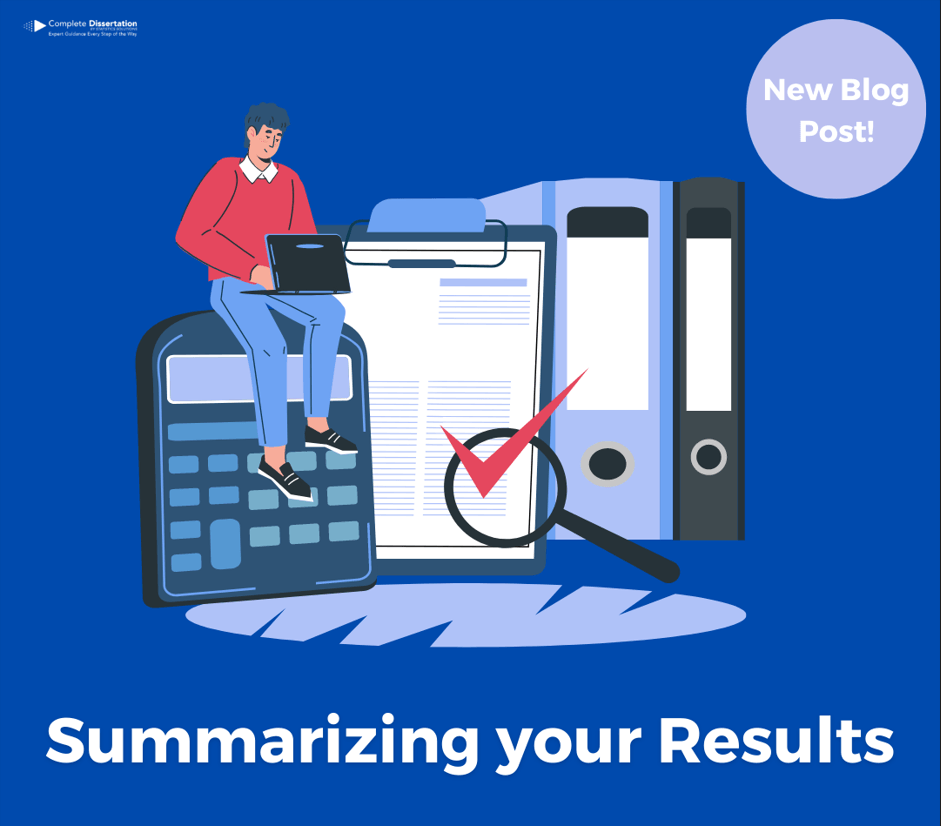Summarizing your Results
When summarizing your results section, it is important to stick to the most important information from your chapter 4- you should not be presenting any new results or interpreting your results within the summary section. Instead, use this section as a brief recap of what you have talked about in the past chapter and a lead into the next chapter. Your summary should be about one page in length.
To start off, your summary paragraph should begin by restating the purpose of your study. What was the goal of conducting the study and running these analyses? Next, you should restate any cleaning and data management procedures used to prepare the data for analysis. Did you remove any outliers or missing data, create any composite scores, or run any assumption tests? If so, briefly mention these things again.
Once you have summarized your data management procedures, its time to focus on the hypothesis test results. When presenting your findings, be sure to break up your explanation by research question. For each research question, briefly restate what the question was and the analyses that were conducted. After describing the analyses, state if the results were significant or not and what the nature of the results looked like. For example, if you are running a t-test you would indicate the test was significant, and then discuss the direction of the difference. Did one group have higher scores than the other? Finally, you should state whether these results supported the null hypothesis or not.
It is important to note that the summary paragraph should not include any numbers or tables. Additionally, your summary should not discuss connecting these results to previous literature or any interpretation. This is what chapter five is for.
Example
Here’s an example of a summary paragraph for linear regression:
Overall the purpose of this quantitative correlational experiment was to determine if participants stress levels affect their academic achievement scores. To prepare the data for analysis, the dataset was cleaned of any missing data or outliers. A composite score was created for participants stress levels according to instrument instructions. Prior to the regression analysis, the assumptions of normality, homoscedasticity, multicollinearity, and lack of outliers were conducted and met. To answer the research question, do stress levels significantly predict achievement scores, a linear regression was conducted and presented above. The results of the regression indicated that there was a significant predictive relationship between stress levels and achievement scores. Specifically, the findings suggest that for every one unit increase in stress levels, students’ achievement scores decrease. Therefore, the null hypothesis was rejected in favor of the alternative. The implications of these results will be discussed in the following chapter.

We work with graduate students every day and know what it takes to get your research approved.
- Address committee feedback
- Roadmap to completion
- Understand your needs and timeframe

If you’re like others, you’ve invested a lot of time and money developing your dissertation or project research. Finish strong by learning how our dissertation specialists support your efforts to cross the finish line.
